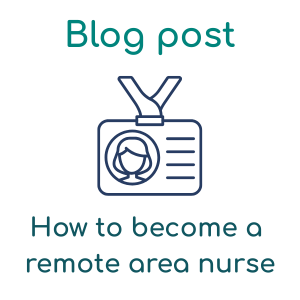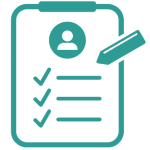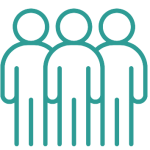
How to become a remote area nurse in Australia
Remote area nurses are skilled medical professionals who keep rural and isolated communities safe and well across Australia. In this article, we’ll look at how to become a remote area nurse, what the role entails and the benefits of taking this career path.
How do I become a remote area nurse?
In Australia, to become a remote area nurse, you first need to qualify as a registered nurse by completing a Bachelor of Nursing or an equivalent degree and registering with the Australian Health Practitioner Regulation Agency (AHPRA).
Once registered, you typically need to have a good level of clinical experience before taking on a remote area nursing role, especially if you want to work in emergency care, primary health or Indigenous health. This experience will prepare you for the unique challenges of remote practice and ensure you’re ready to hit the ground running in your new position.
What courses should I study to become a remote area nurse?
While some remote nursing roles may require additional training or certifications, these are often specific to the role itself, not simply because it’s remote.
If you want to research remote nursing training that is available, support networks such as CRANAplus offer resources including training modules, scholarships and mental health support.
What kind of settings do remote area nurses work in?
Remote area nursing spans a wide range of settings, each with unique challenges and opportunities. These include:
- Residential aged care: Remote area nurses support older adults in aged care facilities, managing chronic conditions, administering medications and providing palliative care. In remote settings, they often coordinate allied health services and offer emotional support to residents who may be far from family and community networks.
- Aboriginal Medical Services (AMS): These community-controlled health organisations provide culturally appropriate care to Aboriginal and Torres Strait Islander populations. Remote area nurses often work in small clinics or outreach programmes within these services.
- Remote health clinics: Located in isolated towns and settlements, these clinics may be staffed by just one or two nurses. Remote area nurses here deliver primary care, emergency response and health education.
- Fly-in fly-out (FIFO) clinics: Some remote area nurses travel to remote locations on a rotational basis, providing care for short periods before returning to a base location. This model is common in mining regions and extremely isolated communities.
- Rural hospitals and health posts: In small towns and regional centres, remote area nurses may work in multipurpose facilities that combine emergency, aged care and outpatient services.
- Community health centres: These centres offer a mix of services including maternal health, chronic disease management and mental health support. Remote area nurses often conduct home visits and community outreach.
- Telehealth services: Increasingly, remote area nurses are involved in remote consultations via phone or video, especially for follow-up care and health advice
- Mobile health units: Some nurses work in travelling clinics that visit remote communities on a scheduled basis, offering vaccinations, screenings and general care.
Where can you do remote nursing work in Australia?
There is strong demand for remote area nurses across rural, regional and remote parts of Australia, with critical shortages in aged care, chronic disease management and Indigenous health services.
- Northern Territory (NT): Communities like Lajamanu, Katherine and Arnhem Land face persistent shortages. Nurses here often work in isolation and manage a wide range of health needs.
- Western Australia (WA): The Kimberley and Pilbara regions have high demand due to geographic isolation and limited access to healthcare. Learn more about remote area nursing jobs in Western Australia with Sanctuary.
- Queensland (QLD): Remote areas such as Cape York and the Torres Strait Islands need remote area nurses for both primary care and emergency response.
- South Australia (SA): The APY Lands and other remote Aboriginal communities rely heavily on remote area nurses.
- New South Wales (NSW): Western NSW and far north-west regions experience shortages, especially in aged care and chronic disease support.
- Victoria and Tasmania: While less remote overall, some rural and island communities still require remote area nurses, particularly for aged care and mental health services.
What are the benefits of remote nursing in Australia?
Remote nursing in Australia offers a deeply rewarding career path, combining professional autonomy with meaningful community impact. Here are some of the benefits you can expect when taking on this type of role:
- Broad clinical scope: Remote area nurses often work independently, managing everything from emergency care to chronic disease, which helps develop advanced clinical and leadership skills.
- Cultural engagement: The role provides opportunities to work closely with Aboriginal and Torres Strait Islander communities, fostering cultural understanding and strong personal connections.
- Lifestyle benefits: Nurses can explore some of Australia’s most stunning landscapes while enjoying flexible work arrangements, such as fly-in fly-out contracts.
- Financial incentives: Remote roles often come with higher pay rates, housing support, and relocation assistance.
- Purpose-driven work: For those seeking adventure, impact, and professional growth, remote nursing offers a unique and fulfilling way to make a lasting difference.
What challenges do remote area nurses face?
One of the most significant challenges for remote area nurses is professional isolation. Many work alone or in very small teams, often without immediate access to doctors or specialists. This means they must make critical decisions independently and manage complex cases with limited resources.
Geographic and logistical barriers also pose difficulties. Nurses may need to travel long distances over rough terrain, deal with unreliable communications, or wait days for patient transfers. Cultural challenges are equally important. Building trust, navigating language differences and delivering culturally safe care require sensitivity and patience. On top of that, emotional strain and burnout can be real concerns, as remote area nurses often carry heavy workloads and face high-stakes situations without the support networks found in urban settings.
What skills are essential for remote area nursing?
Remote area nursing in Australia calls for a unique mix of skills, including:
- Confidence and independence: Nurses in these roles must be clinically confident. Because they often work alone or in small teams, the ability to make sound decisions under pressure and manage time effectively is crucial.
- Interpersonal skills: Building trust with local communities, especially Aboriginal and Torres Strait Islander peoples, requires empathy, respect, and cultural sensitivity.
- Practical adaptability: Remote nurses need to be able to use telehealth tools, navigate challenging terrain, and manage limited resources with creativity and care.
What is the average salary of a remote area nurse in Australia?
Remote area nurses in Australia earn competitive salaries that reflect the complexity and importance of their work. On average, remote area nurses make around AUD $151,290 per year. However, earnings can vary depending on factors such as location, experience and employment arrangements. For those working through agencies, income often depends on the number of shifts picked up, meaning there’s flexibility to earn more if you choose to work additional hours.
Several factors influence how much a remote area nurse is paid, including the level of experience needed, specialised training required, and whether the role is full-time, contract-based, or part of a fly-in fly-out (FIFO) arrangement. Some roles also offer significantly higher pay to attract nurses to more isolated or demanding settings.
Many remote nursing positions come with additional benefits such as housing support, relocation assistance and government incentives, making the financial package even more attractive.
Let’s get started
Taking the first step towards a remote nursing job in Australia is simple with Sanctuary. From our first conversation right through to joining your new community, we’ll make sure the process is smooth and straightforward.
| Send your details
Apply for jobs, send in your CV or register your interest and one of our consultants will be in touch. |
Speak with our team
Your dedicated consultant will learn about your experience, skills and preferences to support your job search. |
Start your remote role
Once you’ve found the right role, we’ll help you through onboarding so that you can confidently start your new role. |



